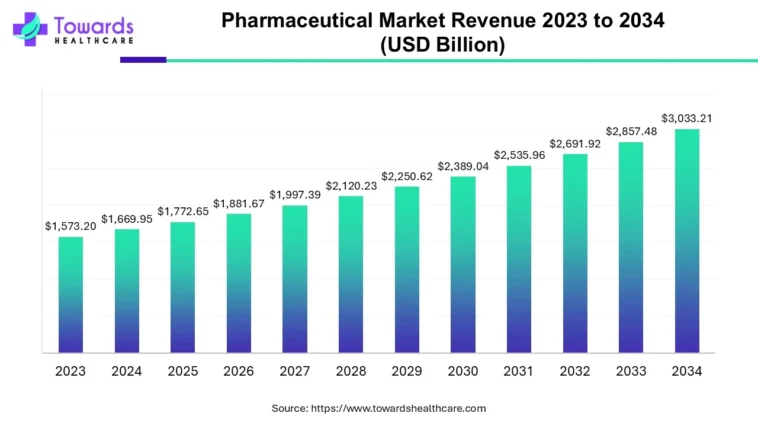The pharmaceutical sector has seen a fascinating evolution in the United States, owing to the influence of the global health crisis, burgeoning alliances across the supply chain, and constant policy changes. The introduction of strategic acquisitions ranging between $1–$5 billion, as reported by PwC, marked the first half of 2025. These acquisitions, mainly found in the pharma and life sciences niches, were approached with a mix of ambition and caution.
An interesting aspect of these acquisitions, however, is the potential risk posed by growing regulatory uncertainty and increased scrutiny, which has had a dampening effect on investor confidence. As a result, the task of predicting revenue and valuing companies has become more intricate. Many organizations have reacted by meticulous evaluation of future projects while aligning their operational objectives.
The healthcare industry has been a magnet for investors due to its impressive history of returns. A recent study by Janus Henderson disclosed that the compound annual dividend growth in the global Healthcare & Pharmaceuticals industry was 3.2%. The sector distributed a significant $138.1 billion to shareholders in dividends in the year 2024. This was a considerable growth from a prior payout of $101.5 billion disbursed five years earlier in 2018.
AstraZeneca PLC (NASDAQ:AZN), one of the top dividend stocks in the pharmaceutical industry, is known for its robust portfolio of drugs under development, which helps to offset looming patent expirations. During the initial quarter, the company added or updated labels of around 13 drugs. A couple of promising medications, specifically AZD5004 and AZD6234 for managing weight, are currently under their consideration.
AstraZeneca has about 200 programs that are currently undergoing research. The first quarter of 2025 itself saw the company reporting a revenue of $13.6 billion, reflecting a 7% YoY growth rate. Interestingly, the revenue upswings were not just domestic but across all key regions. These success stories saw the company planning to expand their investment in manufacturing and research within the United States.
By leveraging its substantial R&D centers in Gaithersburg, Maryland, and Cambridge, Massachusetts, the company is making steady strides towards its ambitious target of achieving a total revenue of $80 billion by the year 2030. This investment will further strengthen AstraZeneca’s hold in the pharmaceutical sector.
Another name worth mentioning in the list of pharmaceutical dividend stocks is Bristol-Myers Squibb Company (NYSE:BMY). While the company faced certain roadblocks in the past years, it secured several important new drug approvals. These include Reblozyl, a novel treatment option for anemia in people with beta-thalassemia, a rare blood disorder.
In the first quarter, Reblozyl sales reached $478 million, showing a robust YoY growth of 35%. Despite experiencing a 5.6% decline compared to the same quarter the previous year, the company’s final revenue of $11.2 billion still surpassed analysts’ estimates by $494.6 million. Bristol-Myers Squibb also displayed a stable cash position, with cash and equivalents standing at $10.9 billion.
This final sum of cash and equivalents represented a significant growth from the $10.34 billion at the end of December 2024. As a result of this performance, the company raised its full-year revenue forecast to an updated range of about $45.8 billion to $46.8 billion from the previous estimate around $45.5 billion.
Amgen Inc. (NASDAQ:AMGN) proves its place among the best dividend stocks in the pharma sector. The company’s strategic acquisition of Horizon Therapeutics, a biotech firm, for $28 billion in 2023 expanded its product offerings considerably and reduced its dependency on older drugs like Enbrel, which are predicted to negatively impact future revenue and profit growth.
With the acquisition, new growth opportunities also surfaced, mainly due to Tepezza, the premier FDA-approved treatment for thyroid eye disease. As the first quarter of 2025 came to a close, Amgen reported a revenue of $8.15 billion, displaying an impressive growth of 9.4% compared to the same period in the previous year.
The company’s strong global demand for its products in the first quarter substantiates its position among the top pharmaceutical dividend stocks. Despite the pharmaceutical sector experiencing significant shifts propelled by a range of internal and external pressures, these companies continue to navigate the changes and reinforce their growth strategies to stay ahead.
With their strategic initiatives, lucrative acquisitions, and increased investments in R&D, these organizations have showcased resilience and adaptability. In turn, this is enhancing their credibility among investors, and marking an important step toward fostering sustainable growth.
Given the consistent track record of the healthcare sector in terms of returns, investors will likely continue to be drawn by the attractive dividends these pharmaceutical stocks offer. Thus, AstraZeneca, Bristol-Myers Squibb, and Amgen are particularly poised to offer solid returns for their shareholders.
Finally, it’s clear that these pharma giants are undeterred by the realm of uncertainties and continue to provide substantial dividends to their shareholders while also keeping up with their growth trajectory. This makes them all valuable potential candidates for any discerning investors’ portfolio.

